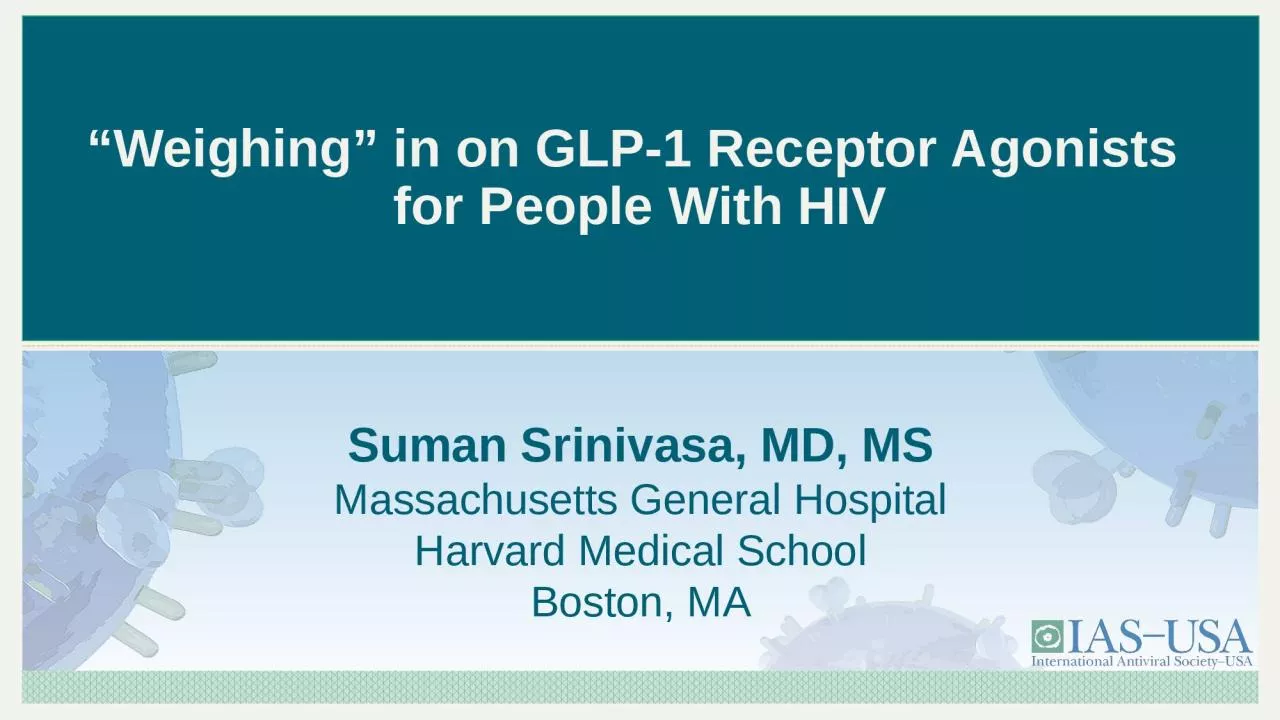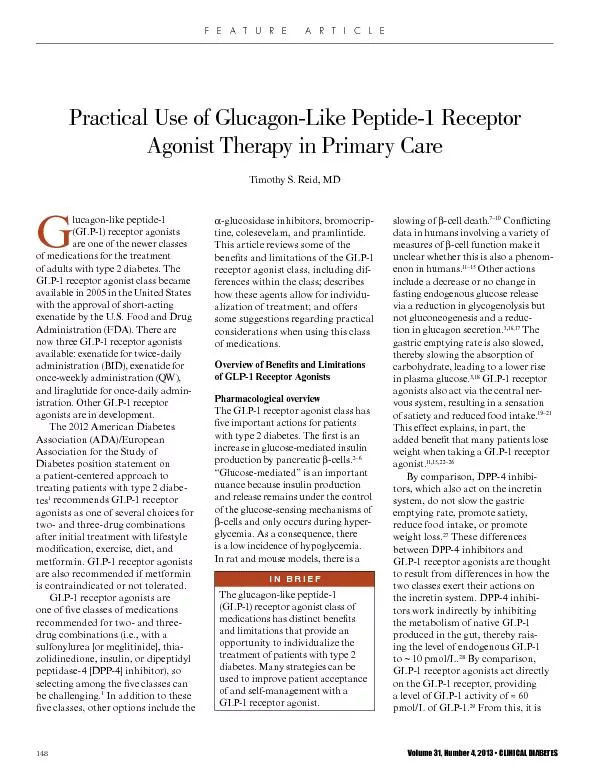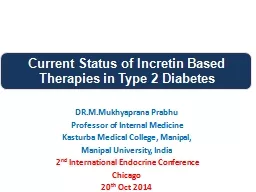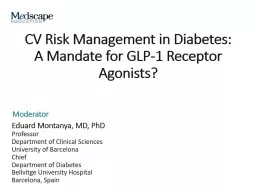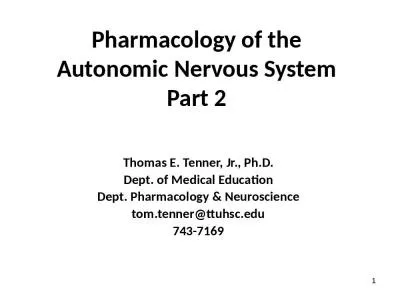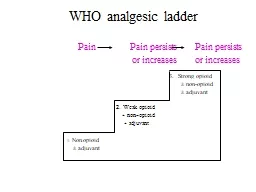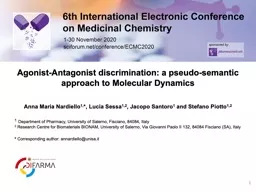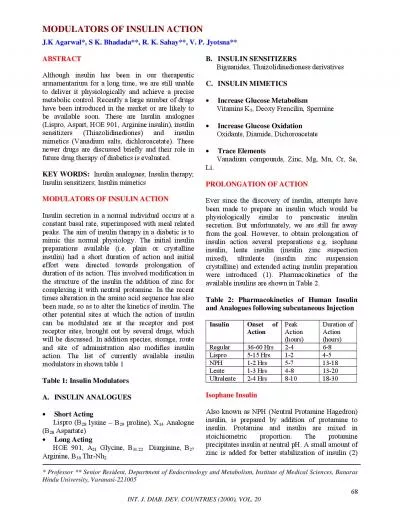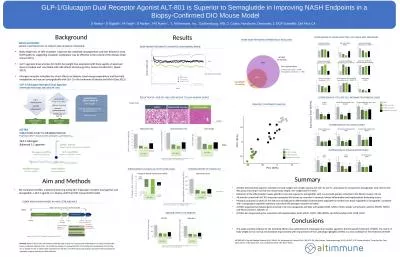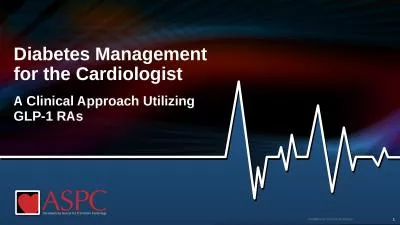PPT-“Weighing” in on GLP-1 Receptor Agonists
Author : priscilla | Published Date : 2024-03-13
for People With HIV Suman Srinivasa MD MS Massachusetts General Hospital Harvard Medical School Boston MA Financial Relationships With Ineligible Companies Formerly
Presentation Embed Code
Download Presentation
Download Presentation The PPT/PDF document "“Weighing” in on GLP-1 Receptor Agon..." is the property of its rightful owner. Permission is granted to download and print the materials on this website for personal, non-commercial use only, and to display it on your personal computer provided you do not modify the materials and that you retain all copyright notices contained in the materials. By downloading content from our website, you accept the terms of this agreement.
“Weighing” in on GLP-1 Receptor Agonists: Transcript
Download Rules Of Document
"“Weighing” in on GLP-1 Receptor Agonists"The content belongs to its owner. You may download and print it for personal use, without modification, and keep all copyright notices. By downloading, you agree to these terms.
Related Documents

